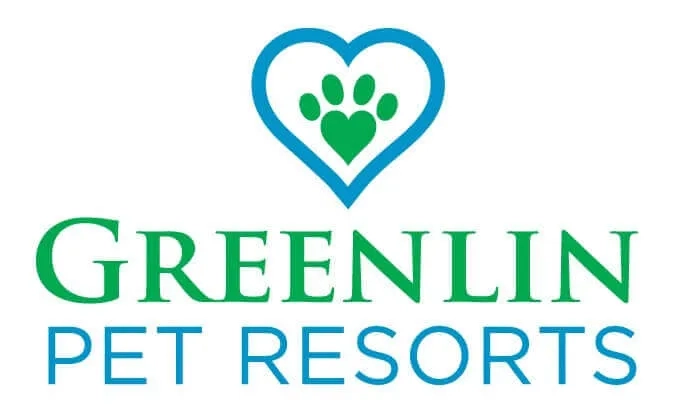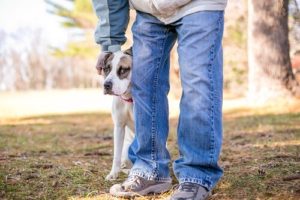How to Boost the Confidence of a Fearful Dog
Most of the time, when we picture a dog in our minds, we imagine that the dog will be friendly and playful. This makes sense since many dogs do conform to that stereotype. However, much like humans, dogs have many different personality traits. And while some dogs are friendly and curious, others may be shy or anxious.
If you have a dog that is often anxious or scared of new experiences, the good news is that there are things you can do to help them feel more confident! This article will discuss why some dogs are fearful, what it looks like when your dog is feeling uncomfortable, and give you tips about ways you can work with your dog to improve their confidence.
Why Are Some Dogs Fearful or Anxious?
There are several different reasons why your furry friend may be prone to anxiety. In some cases, the dogs who are dealing with these emotions are genetically predisposed to them. There are many cases, though, where your dog may be shy or unconfident in new situations due to a lack of socialization as a puppy or some traumatic or overwhelming experience that happened earlier in their life.
However, just because your dog may not have been exposed to as many new experiences as a puppy would be considered ideal, it doesn’t mean that your dog can’t learn to be more confident navigating through life! Though they no longer learn in the same way that they would have when they were young, they can still be trained to be less fearful in new situations.
What Does an Anxious Dog Look Like?
When trying to determine how your dog is feeling in any given situation, paying attention to their body language will give you the best insight as to how they are feeling. If your dog is anxious in a situation, they will behave as most humans do — they will try to escape it!
However, if your furry friend can’t escape the source of their fear or anxiety, they may:
- Cower or tremble
- Yawn excessively or pace
- Growl, whine, or bark
- Lunge at other dogs or humans
- Appear depressed
If you notice your dog displaying any of these behaviors, you shouldn’t continue to force them to be in that situation. If your dog is feeling cornered or scared, they may escalate their behavior, so if they are giving you signals they are uncomfortable, it is best to let them have some space.
Dog Desensitization and Counterconditioning Techniques
One way that you can help your shy dog gain more confidence in different situations is to give them a small amount of repeated exposure in a safe environment to whatever is making them feel scared. You can start small, taking them to the quietest part of a new place for a short amount of time, and build up from there.
The more they have experience in different situations, the more desensitized they get, the more comfortable they will become — as long as they do not become overwhelmed in the training process. The risk is that if your desensitization creates a new traumatic experience, they will have new reasons to feel anxious. Try to keep exposures low and brief, and give the animal the control to cut the experience short if they are reacting poorly. Remember that a short, positive experience is always better than a long one that may be traumatic for your dog.
In order to make this process even more effective for your pet, you can also pair these desensitization activities with a delicious treat. In doing so, your dog will slowly start to be able to associate these new places and activities with something good — the treat — instead of something scary. The treats should be given no matter your dog’s behavior, just for being in the new environment. If your dog reacts in a way that is less than ideal, you can still give them the treat and then pull back on the level of exposure the next time you work on their desensitization.
It can be difficult to find the right balance with your pet during this process. If you find this to be the case, Greenlin Pet Resorts have certified trainers who can work with you and your dog in order to help guide this important process.
Tips For Interacting with People
If your dog is showing anxiety around interacting with people, here are some ideas to try to get your dog more comfortable:
- Allow your dog time to get used to someone new. You can ask the new person to ignore your dog and only respond when the dog decides to approach the person.
- The new person can also give the dog a treat as a way to signal that meeting new people can be rewarding.
- Have the new person avoid making eye contact with your dog, as that can be seen as a threat or intimidating.
- You can approach dogs from the floor, not from a higher level.
- Avoid having people pet your dog on their head; instead, direct their affection to under the chin or on their trunk.
- Slowly introduce your dog to settings where there will be many unknown people.
Tips for Interacting with Other Dogs
If your dog is showing fear or discomfort around other dogs, the steps you can take to help alleviate that are fairly similar to any other scary stimulus.
First of all: take it slow. If your dog is showing you that they are uncomfortable around other dogs, remove them from that situation. If you know that your dog is going to be in a space where other dogs are present, make a plan about what to do and how to handle it if your dog gets uncomfortable. For instance, if you are going on a walk where you may encounter other canines, plan to walk on the far edge of the sidewalk to give both your dog and the other dog plenty of room when passing each other.
Contact Greenlin for Your Dog Training Needs
If you have tried these tips and your dog is still feeling anxious and uncomfortable in new situations, consider bringing your dog to Greenlin Pet Resorts. We have five convenient locations in central Pennsylvania, all of which offer dog training services as well as a dog daycare that can help your dog socialize and build confidence.
Contact us today to schedule a free training evaluation! You will get to meet one of our professional trainers and discuss your training needs. After the initial consultation, we will develop an individualized training plan for your pup, based on positive reinforcement.
Our trainers have a deep knowledge of a variety of training methods, so we will strive to find something that works for you and your pup! Contact us today so we can get started teaching your dog how to be more confident and less anxious.

